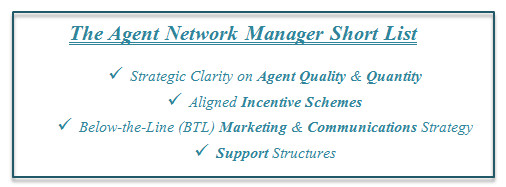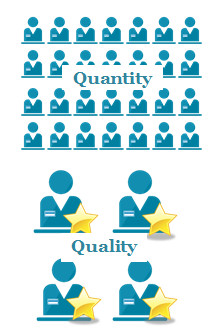
When the champagne bottle is popped for the successful launch of a digital financial service (mobile money/ agent banking) agent network, nobody – hopefully, with the exception of the agent network manager (ANM) – seems to appreciate the efforts behind ensuring the product launch is premised on an immediate start in transactions. This is paramount because most new roll-outs stumble here and never recover.
So once the milestone ‘No Objection Letter’ (or license, depending on the jurisdiction) is received from the authorities, what is your short-list of priorities that must be executed to ensure your launch party is not the last party you throw? The answer to this question will depend on an initial examination of the maturity level of the market in which you are operating and the target demographic your roll-out has chosen to target first.
These considerations will determine how you cross items off your list, but the top four items that you need on it, are fundamentally the same everywhere.


1. Strategic Clarity on Agent Quality & Quantity: You will need to understand how your business model projections and target market affect the spread and quality of your agents. Lowering float requirements might drive agent applications in the short term, but lead to agents being unable to transact at high volumes or values. Will that conflict with your vision of success? Other trade-offs will affect how/if your agents become located in areas that align with your business model and provide service to the quality that your demographic expects. These trade-offs include how much marketing materials will be provided, the amount of training provided at inception and the KPIs you set for opening rural locations. Avoid common pitfalls like thinking that mass market demographics do not want high quality service; and that if one heavily favours low quality, high growth at the beginning of the roll-out that they will easily be able to shift that back to high quality later.

2. Aligned Incentive Schemes: One of the most – if not THE most- challenging task for the agent manager is building a business case that will appeal to prospective agents. Often pricing structures are designed for the customers, but forget that everyone in the ecosystem “has to eat”, and in this sense, agents are customers too. The manager has to balance attracting the most desirable set of agents with an exciting Return on Investment (ROI) structure, with ensuring that the business breaks-even sooner rather than later.
It is essential that you have an incentive scheme that is aligned with your business plan, and rewards the agents based on the quantum of efforts made. Furthermore, programme some flexibility into it, so that the structure can evolve fluidly with shifts in your business model. For example, in the first year, customer on-boarding will be the most important to the business. Therefore, you may want to skew a lot of the incentives to customer on-boarding, but later-on taper this off and increase rewards to alternative growth areas, like P2P or pay-bill transactions. Further, you may keep the network management in-house right after launch when the network is small, but if you plan to scale, most will bring in a mid-level master agent structure later, and the incentive structure will have to be able to accommodate this seamlessly.

3. Below-the-Line (BTL) Marketing & Communications Strategy: Many providers spend a fortune in above the line (ATL) marketing ignoring on-the-ground activities where the rubber-meets-the-road. From my own experience, whereas ATL is important to build product awareness and mass credibility, below the line (BTL) activities have the most impact. This is mainly users must have a much higher level of trust to send their hard earned money through a digital financial services system than to use voice or SMS services. That trust is built on the ground, face to face, with new users. Therefore, the more feet and dollars you have on the ground, the more impact you have with the masses.
The most important focus of BTL is training. You will need to train, retrain and keep training the agents until they sing your song in their sleep! Agents are anyways the face of your business in the market place. And while at it, please generate as much chemistry as you can develop lasting relationships with these agents. Agents have been known to be more empathetic to providers that maintain good relationships with them, and this can ultimately determine the success or failure of your business.

4. Support Structures: Finally with any new roll-out, problems will arise constantly and agents need to know that you will be there to help them work through them. Will you have a private helpline for agents? How often will you visit them, what level of support will you provide alerting them of fraudsters, and helping them manage their liquidity? Remember your back-end system will tell you how much e-float they have but how will you consistently determine their cash levels and predict when they will have issues? The more support you are able to give them, the higher quality service they are able to provide for you. And if you are looking to evolve your network in the future to handle more sophisticated banking products, this is something you want to put in place from the start, so you can ensure optimal performance, and encourage agent retention.
Kimathi Githachuri is Head of The Helix Institute of Digital Finance. As an expert in digital financial services, he previously worked as: Head of Mobile Money at Warid Telecom in Uganda (GSMA Sprinter), Mobile Money Channel Development Manager at Airtel Kenya and Area Sales Manager at M-PESA where he helped build the M-PESA network.
Extra Reading:
- For more details on strategy see: MicroSave Briefing Note # 116 Building Business Models for Mobile Money
- For more details on agent incentives see: MicroSave Briefing Note # 108 Incentives for E/M-Banking Customers to Drive Usage & MicroSave Briefing Note # 109 Incentivising E/M-Banking Agents
- For more details on marketing see: MicroSave Briefing Note # 103 Top Marketing Challenges for E/M-Banking (2/5)
- For more details on agent training see: MicroSave Briefing Note # 135 Training E/M-Banking Agents: What is Missing? & MicroSave Briefing Note # 138 Implementing Training for E/M-Banking Agents
- For more details on agent liquidity management see:MicroSave Briefing Note # 78 M-Banking Liquidity Management
- For more details on fraud in digital financial systems see: Fraud in Mobile Financial Services









